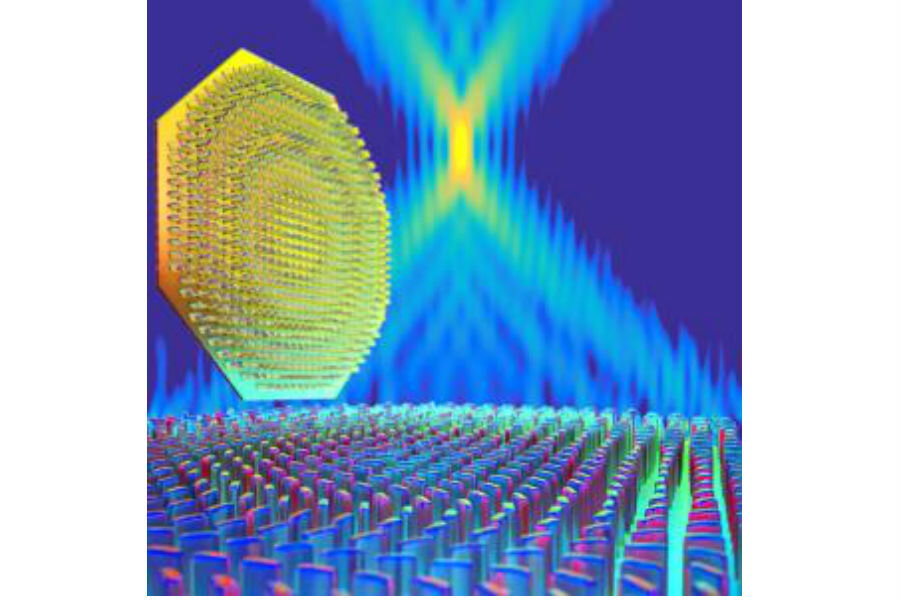Will new ultra-thin meta-lenses revolutionize optics?
Researchers from Harvard University have developed a new type of flat lens that could replace more cumbersome curved glass optics currently used in a wide range of imaging appliances.
“This technology is potentially revolutionary because it works in the visible spectrum, which means it has the capacity to replace lenses in all kinds of devices, from microscopes to cameras, to displays and cell phones,” Harvard professor and researcher Federico Capasso said in a university release. Professor Capasso was also the senior author of a paper on the new technology, published in the journal Science.
Capasso's planar lens is capable of processing images of objects smaller than even the best current microscopes, using a titanium dioxide-based array of nanostructures. That oxide is already used in applications ranging from skincare to white pigmentation for paints, foods, and more, and was chosen by the researchers due to its ubiquity and capacity to process light.
“We needed a material that would strongly confine light with a high refractive index,” Harvard graduate researcher Rob Devlin explained in the release. “And in order for this technology to be scalable, we needed a material already used in industry.”
The new optic, called a metalense, has better focusing power than traditional glass lenses and measures a fraction of a millimeter in thickness. Metalenses can focus light into an area tighter than one of its wavelengths, providing image resolution that would not be possible using less precise glass structures while streamlining tools that utilize the lenses.
“Any good imaging system right now is heavy because the thick lenses have to be stacked on top of each other,” lead author Mohammadreza Khorasaninejad said in the release. “This technique reduces weight and volume and shrinks lenses thinner than a sheet of paper.”
The researchers believe the technology has the potential to make an impact in the imaging market due to its high-resolution capabilities and ease of manufacturing, driving costs down. The metalenses are formed using nanostructures on a scale larger than that of the finest microprocessors and memory chips, meaning that the factories that produce those products could easily and inexpensively manufacture the lenses.
“In the near future, metalenses will be manufactured on a large scale at a small fraction of the cost of conventional lenses,” Capasso said. And while the thin lenses are currently being tested at a size of only 2 millimeters wide, Capasso says that with industrial access even larger products could be developed.
“Once you have the foundry – you want a 12-inch lens? Feel free, you can make a 12-inch lens. There's no limit,” he told BBC.
The researchers think the new lensing could be used beyond microscopic imaging, with potential applications including cell phone cameras, virtual reality headsets, space telescopes, and even contact lenses.
The technology could be expanded beyond the visible light spectrum in the future, using silicon instead of titanium oxide to image in the infrared, or other bases for ultraviolet metalenses. The researchers also hope to improve upon the resolving power of their original prototype, either by redesigning or stacking the optics.







